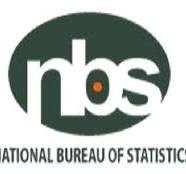The latest report by the National Bureau of Statistics (NBS) and the International Labour Organisation (ILO) released on Thursday indicated that over 24 million Nigerian children between the ages of 5 to 17 were engaged in child labour.
According to the report titled ‘Nigeria Forced Labour Survey 2022’ a total of 24,673,485, representing 39.2% of the children population is trapped in child labour with a near-equal distribution ratio of 39.6% of boys and 38.8% of girls.
Of these figures, the report indicated that 30.0% of the child workers were located in urban settings while 44.8% are in rural areas.
A further analysis of the report’s findings reflected that 31,756,302 of Nigeria’s child population, representing 50.5%, were engaged in economic activity while 14, 390,353 (22.9%) were in hazardous work.
The report further revealed that regionally, the North-West geopolitical zone had the highest number of child labour with 6,407,102 and 3,266,728 in hazardous work while the South-East geopolitical zone had the highest rate of hazardous work and child labour, affecting 49.9% of the zone’s child population.
The report also indicated that 5.2% individuals per thousand were subjected to forced labour in their current employment, drawn from a total of 617,503 individuals interviewed in 2022.
The sectors most affected comprised services, excluding domestic work 36.9% and agriculture 36.2%.
Speaking on the report’s findings at the event, the Statistician-General of the Federation/ CEO of the NBS, Prince Adeyemi Adeniran, attested to the credibility of the report’s data which, he disclosed, was conducted from a sample of 16,000 households across all 36 states and the Federal Capital Territory (FCT).
Adeniran maintained that the findings would serve as a resource tool for public and private sector stakeholders for making informed decisions as regards the challenges of child labour and other related unemployment situation in the country.






